Intensive Spanish courses
since 1964
Levels, contents and length

Gran Canaria School of Languages offers Spanish Courses all year round in the 6 levels of the Common European Framework of Reference for Languages: A1, A2, B1, B2, C1 and C2.
In addition to grammar, the teaching programme at the different levels includes lexical, functional and thematic or cultural content, which always takes into account the objectives of the four skills: oral and written expression, oral and written comprehension.
Length |
All levels begin the first Monday of a month and thus run for 4 to 5 weeks (check this calendar).
Beginners (level A1) must start on the first Monday of a month. Beginners with some knowledge can join that level 1 or 2 weeks later.
Other levels or students in private courses (one-to-one) can start any Monday of the year.
The level C1 is given from October to the end of March.
The student may book the course as of 1 week and for as many weeks as desired.
Course format |
|
Level |
Length in weeks |
Hours/week |
Max. particip. |
|
A1, A2, B1, B2 Avanza, B2 Progresa |
4 to 5 weeks. All year round |
Course20: 20 hours in Standard course Course25: 20 hours in Standard course + 5 Private hours Course30: 30 hours in Standard course + 10 Private hours |
14 |
|
C1 Avanza, C1 Progresa |
4 to 5 weeks. October to end of March |
||
|
C2 |
All year round |
Private or Duo: 10 hours/week |
1 or 2 |
Why are levels B2 and C1 divided into Avanza and Progresa? |
Levels B2 and C1 not only cover a large amount of content; they also require you to consolidate what you have learned at lower levels. To ensure adequate progression in learning, levels B2 and C1 are divided into two blocks: Avanza and Progresa.
There is no pre-established order for each block. The student can start indistinctly with Avanza or with Progresa, but in order to pass the complete B2 or C1 level, both blocks must be taken, as each unit includes different contents.
Grammar contents
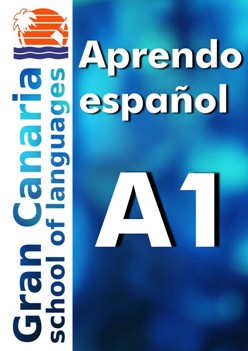
|
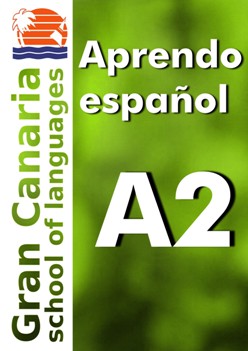
|
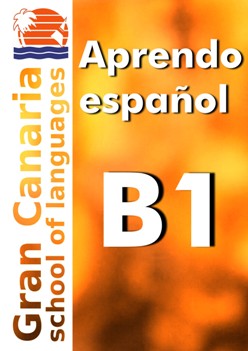
|
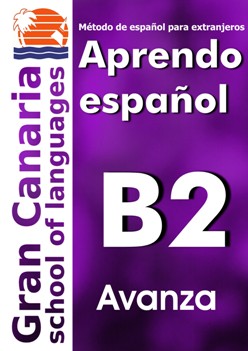
|
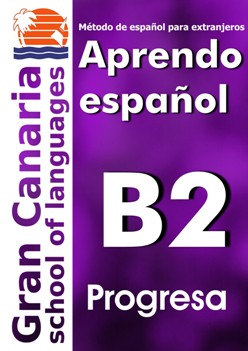
|
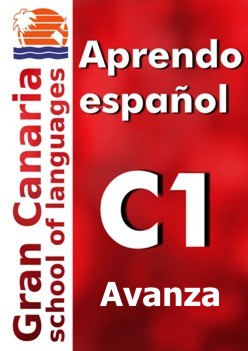
|
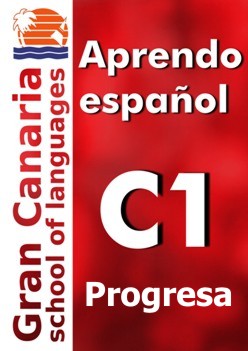
|
Grammar contents and their distribution by weeks
Gran Canaria School of Languages offers Intensive Spanish Courses all year round in the following levels: A1, A2, B1 and B2. Level C1 is given from October to the end of March. C2 is given as private course (one-to-one).
As some months contain 4 weeks and some contain 5, the content of each level is spread into 4 or 5 weeks accordingly.
Below we detail the grammar contents of Levels A1, A2, B1, B2 Avanza, B2 Progresa, C1 Avanza and C1 Progresa and their distribution by weeks.
On this example the contents have been spread over 4 weeks.
The distribution of this grammar content as stated on the following tables is flexible and not binding, as it depends on factors such as the number of students in the group, the rate of progress, etc.
Besides the grammar content, the teaching plan of the different levels includes lexical, functional and thematic or cultural contents, always keeping in mind the objectives of the four skills: both oral and written expression and comprehension.
A1
A1 Beginner:

After finishing this level the student can understand and use familiar everyday expressions and very basic phrases aimed at the satisfaction of needs of a concrete type. Can introduce him/herself and others and can ask and answer questions about personal details such as where he/she lives, people he/she knows and things he/she has. Can interact in a simple way provided the other person talks slowly and clearly and is prepared to help.
The student must pass a mandatory level test to step up to the next level.
|
Week |
Grammar content for months of 4 weeks |
|
Week 1 |
Verbo llamarse Verbos regulares en presente Verbo ser Verbo tener Pronombres personales sujeto Interrogativos: cómo, dónde, cuál, cuántos/as Género y número de los sustantivos Los artículos La negación |
|
Week 2 |
Concordancia sustantivo-adjetivo Interrogativos: quién, quiénes Los posesivos La comparación de adjetivos Preposición de Muy, un poco Verbo estar Preposición + artículo: al, del Verbo haber: hay Contraste estar / hay Verbo ir |
|
Week 3 |
Por qué, porque Para qué, para Verbos irregulares en presente: querer, preferir, saber, conocer Verbos y pronombres reflexivos Verbos gustar, encantar, interesar, quedar Pronombres de objeto indirecto Demostrativos este, ese, aquel y sus variantes Adverbios de lugar: aquí, ahí, allí |
|
Week 4 |
Verbos doler, pasar, encontrarse, sentirse Perífrasis de obligación: tener que + infinitivo, deber + infinitivo, hay que + infinitivo (No) se puede + infinitivo Contraste ser / estar Muy, mucho La comparación de sustantivos Pronombres y adjetivos indefinidos Verbos irregulares decir, oír, construir Estar (presente) + gerundio Perífrasis de futuro ir a + infinitivo y pensar + infinitivo |
|
Week |
Grammar content for months of 5 weeks |
|
Week 1 |
Verbo llamarse Verbos regulares en presente Verbo ser Verbo tener Pronombres personales sujeto Interrogativos: cómo, dónde, cuál, cuántos/as Género y número de los sustantivos Los artículos La negación |
|
Week 2 |
Concordancia sustantivo-adjetivo Interrogativos: quién, quiénes Los posesivos La comparación de adjetivos Preposición de Muy, un poco Verbo estar Preposición + artículo: al, del Verbo haber: hay Contraste estar / hay Verbo ir |
|
Week 3 |
Por qué, porque Para qué, para Verbos irregulares en presente: querer, preferir, saber, conocer Verbos y pronombres reflexivos |
|
Week 4 |
Verbos gustar, encantar, interesar, quedar Pronombres de objeto indirecto Demostrativos este, ese, aquel y sus variantes Adverbios de lugar: aquí, ahí, allí Verbos doler, pasar, encontrarse, sentirse Perífrasis de obligación: tener que + infinitivo, deber + infinitivo, hay que + infinitivo (No) se puede + infinitivo Contraste ser / estar Muy, mucho La comparación de sustantivos Pronombres y adjetivos indefinidos Verbos irregulares decir, oír, construir Estar (presente) + gerundio Perífrasis de futuro ir a + infinitivo y pensar + infinitivo |
|
Week 5 |
La comparación de sustantivos Pronombres y adjetivos indefinidos Verbos irregulares decir, oír, construir Estar (presente) + gerundio Perífrasis de futuro ir a + infinitivo y pensar + infinitivo |
A2
A2 Basic:

After finishing this level the student can understand sentences and frequently used expressions related to areas of most immediate relevance (e.g. very basic personal and family information, shopping, local geography, employment). Can communicate in simple and routine tasks requiring a simple and direct exchange of information on familiar and routine matters. Can describe in simple terms aspects of his/her background, immediate environment and matters in areas of immediate need.
The student must pass a mandatory level test to step up to the next level.
|
Week |
Grammar content for months of 4 weeks |
|
Week 1 |
Pretérito indefinido: morfología (verbos regulares e irregulares) y usos Estar (pretérito indefinido) + gerundio Marcadores temporales del pretérito indefinido Conectores temporales Perífrasis verbales: volver a + infinitivo, empezar a + infinitivo Preposiciones a y en |
|
Week 2 |
Pretérito perfecto: morfología (participios regulares e irregulares) y usos Marcadores temporales de pretérito perfecto Contraste pretérito indefinido / pretérito perfecto Perífrasis verbales: acabar de + infinitivo Pronombres de objeto directo y de objeto indirecto Posición de los pronombres |
|
Week 3 |
Pretérito imperfecto: morfología (verbos regulares e irregulares) y usos Marcadores temporales de pretérito imperfecto Soler + infinitivo Contraste de los tiempos de pasado: pretérito indefinido, pretérito perfecto, pretérito imperfecto Estar (pretérito imperfecto) + gerundio La causa: porque, como |
|
Week 4 |
Futuro simple: morfología (verbos regulares e irregulares) y usos Contraste futuro simple / futuro perifrástico (ir a + infinitivo) Marcadores temporales de futuro Condicional simple: morfología (verbos regulares e irregulares) y usos |
|
Week |
Grammar content for months of 5 weeks |
|
Week 1 |
Pretérito indefinido: morfología (formas regulares e irregulares) y usos Estar (pretérito indefinido) + gerundio Marcadores temporales Conectores temporales Perífrasis verbales: volver a + infinitivo y empezar a + infinitivo Preposiciones a y en |
|
Week 2 |
Pretérito perfecto: morfología (participios regulares e irregulares) y usos Marcadores temporales Contraste p. indefinido / p. perfecto Perífrasis verbales: acabar de + infinitivo Pronombres de objeto directo Posición de los pronombres de objeto directo |
|
Week 3 |
Pronombres de objeto directo y de objeto indirecto Posición de los pronombres Pretérito imperfecto: morfología (formas regulares e irregulares) y usos Marcadores temporales Soler + infinitivo |
|
Week 4 |
Contraste de los tiempos de pasado: pretérito indefinido, pretérito perfecto, pretérito imperfecto Estar (pretérito imperfecto) + gerundio La causa: porque, como |
|
Week 5 |
Futuro simple: morfología (verbos regulares e irregulares) y usos Marcadores temporales Contraste ir a + infinitivo y futuro simple Condicional simple: morfología (verbos regulares e irregulares) y usos |
B1
B1 Intermediate:

After finishing this level the student can understand the main points of clear standard input on familiar matters regularly encountered in work, school, leisure, etc. Can deal with most situations likely to arise whilst travelling in an area where the language is spoken. Can produce simple connected text on topics which are familiar or of personal interest. Can describe experiences and events, dreams, hopes & ambitions and briefly give reasons and explanations for opinions and plans.
The student must pass a mandatory level test to step up to the next level.
|
Week |
Grammar content for months of 4 weeks |
|
Week 1 |
Pretérito indefinido Estar (pretérito indefinido) + gerundio Pretérito perfecto Pretérito imperfecto Estar (pretérito imperfecto) + gerundio Soler + infinitivo Marcadores temporales Contraste de tiempos de pasado Los adverbios en -mente Pretérito pluscuamperfecto Imperfecto de conato Imperfecto de cortesía Estilo indirecto: presente > imperfecto El artículo y los topónimos Ser/estar Bueno, malo, bien, mal |
|
Week 2 |
Imperativo afirmativo y negativo Objeto directo y objeto indirecto Presente de subjuntivo: verbos regulares e irregulares Perífrasis verbales: dejar de + infinitivo y seguir + gerundio |
|
Week 3 |
Verbos y expresiones que se construyen con indicativo y subjuntivo: valoración y opinión Nexos causales: porque, como, es que, que Nexos consecutivos: así que, entonces, o sea que Nexos finales: para, para que Contraste por / para Superlativo relativo y absoluto Oraciones de relativo Cuantificadores indefinidos |
|
Week 4 |
Perífrasis verbales: llevar + gerundio y llevar sin + infinitivo Oraciones temporales Nexos temporales Futuro simple con valor de probabilidad Condicional simple con valor de probabilidad Futuro perfecto: morfología y usos Quizás, tal vez, probablemente, posiblemente, seguramente, a lo mejor, igual (es que), puede (ser) que |
|
Week |
Grammar content for months of 5 weeks |
|
Week 1 |
Pretérito indefinido Estar (p. indefinido) + gerundio Pretérito perfecto Pretérito imperfecto Estar (p. imperfecto) + gerundio Soler + infinitivo Marcadores temporales Contraste de tiempos de pasado Los adverbios en -mente Pretérito pluscuamperfecto Imperfecto de conato Imperfecto de cortesía Estilo indirecto: presente > imperfecto |
|
Week 2 |
El artículo y los topónimos Ser / estar Bueno, malo, bien, mal Imperativo afirmativo y negativo Objeto directo y objeto indirecto |
|
Week 3 |
Presente de subjuntivo: verbos regulares e irregulares Perífrasis verbales: dejar de + infinitivo y seguir + gerundio Verbos y expresiones que se construyen con indicativo y subjuntivo: valoración y opinión |
|
Week 4 |
Nexos causales: porque, como, es que, que Nexos consecutivos: así que, entonces, o sea que Nexos finales: para, para que Contraste por / para Superlativo relativo y absoluto Oraciones de relativo Cuantificadores indefinidos |
|
Week 5 |
Perífrasis verbales: llevar + gerundio y llevar sin + infinitivo Oraciones temporales Nexos temporales Futuro simple con valor de probabilidad Condicional simple con valor de probabilidad Futuro perfecto: morfología y usos Quizás, tal vez, probablemente, posiblemente, seguramente, a lo mejor, igual (es que), puede (ser) que |
B2 Avanza
B2 Advanced:

After finishing both blocks of this level (Avanza and Progresa) the student can understand the main ideas of complex text on both concrete and abstract topics, including technical discussions in his/her field of specialization. Can interact with a degree of fluency and spontaneity that makes regular interaction with native speakers quite possible without strain for either party. Can produce clear, detailed text on a wide range of subjects and explain a viewpoint on a topical issue giving the advantages and disadvantages of various options.
The student must complete both blocks (Avanza and Progresa) and pass a mandatory level test to step up to the next level.
|
Week |
Grammar content for months of 4 weeks |
|
Week 1 |
Oraciones sustantivas Pretérito imperfecto de subjuntivo Pretérito perfecto de subjuntivo |
|
Week 2 |
Oraciones de relativo Pronombres relativos Oraciones modales Oraciones comparativas Perífrasis verbales y verbos de cambio |
|
Week 3 |
Oraciones condicionales Pretérito pluscuamperfecto de subjuntivo Condicional compuesto Expresión de deseo Expresión de duda Expresión de probabilidad |
|
Week 4 |
Estilo indirecto Revisión de tiempos de indicativo y de subjuntivo |
|
Week |
Grammar content for months of 5 weeks |
|
Week 1 |
Oraciones sustantivas Pretérito imperfecto de subjuntivo Pretérito perfecto de subjuntivo Oraciones de relativo Pronombres relativos |
|
Week 2 |
Oraciones de relativo Pronombres relativos Oraciones modales Oraciones comparativas Perífrasis verbales y verbos de cambio |
|
Week 3 |
Oraciones condicionales Pretérito pluscuamperfecto de subjuntivo Condicional compuesto |
|
Week 4 |
Expresión de deseo Expresión de duda Expresión de probabilidad |
|
Week 5 |
Estilo indirecto Revisión de tiempos de indicativo y de subjuntivo |
B2 Progresa
B2 Advanced:

After finishing both blocks of this level (Avanza and Progresa) the student can understand the main ideas of complex text on both concrete and abstract topics, including technical discussions in his/her field of specialization. Can interact with a degree of fluency and spontaneity that makes regular interaction with native speakers quite possible without strain for either party. Can produce clear, detailed text on a wide range of subjects and explain a viewpoint on a topical issue giving the advantages and disadvantages of various options.
The student must complete both blocks (Avanza and Progresa) and pass a mandatory level test to step up to the next level.
|
Week |
Grammar content for months of 4 weeks |
|
Week 1 |
Oraciones sustantivas Pretérito imperfecto de subjuntivo Pretérito perfecto de subjuntivo |
|
Week 2 |
Oraciones temporales: conectores y modos Revisión de tiempos de pasado Oraciones finales Usos de ser y estar Voz pasiva |
|
Week 3 |
Oraciones concesivas Pretérito pluscuamperfecto de subjuntivo Oraciones causales Oraciones consecutivas |
|
Week 4 |
Estilo indirecto Revisión de tiempos de indicativo y de subjuntivo |
|
Week |
Grammar content for months of 5 weeks |
|
Week 1 |
Oraciones sustantivas Pretérito imperfecto de subjuntivo Pretérito perfecto de subjuntivo |
|
Week 2 |
Oraciones temporales: conectores y modos Revisión de tiempos de pasado |
|
Week 3 |
Oraciones finales Usos de ser y estar Voz pasiva |
|
Week 4 |
Oraciones concesivas Pretérito pluscuamperfecto de subjuntivo Oraciones causales Oraciones consecutivas |
|
Week 5 |
Estilo indirecto Revisión de tiempos de indicativo y de subjuntivo |
B2: differences Avanza and Progresa
Level B2 not only covers a large amount of content; it also requires you to consolidate what you have learned at lower levels. To ensure adequate progression in learning, level B2 is divided into two blocks: Avanza and Progresa.
There is no pre-established order for each block. The student can start indistinctly with Avanza or with Progresa, but in order to pass the complete B2 level, both blocks must be taken, as each unit includes different contents.
|
Grammar content |
Av |
Pr |
|
Pretérito perfecto de subjuntivo |
|
|
|
Pretérito imperfecto de subjuntivo |
|
|
|
Oraciones sustantivas |
|
|
|
Oraciones de relativo |
|
|
|
Pronombres de relativo |
|
|
|
Oraciones modales |
|
|
|
Oraciones comparativas |
|
|
|
Perífrasis verbales y verbos de cambio |
|
|
|
Condicional compuesto |
|
|
|
Pluscuamperfecto de subjuntivo |
|
|
|
Oraciones condicionales |
|
|
|
Expresión de deseo, duda y probabilidad |
|
|
|
Estilo indirecto |
|
|
|
Revisión de tiempos de indicativo y subjuntivo |
|
|
|
Oraciones temporales |
|
|
|
Revisión de tiempos de pasado |
|
|
|
Oraciones finales |
|
|
|
Usos de ser y estar |
|
|
|
Voz pasiva |
|
|
|
Oraciones concesivas |
|
|
|
Estructuras reduplicativas |
|
|
|
Oraciones causales |
|
|
|
Oraciones consecutivas |
|
C1 Avanza
C1 Superior:

Level C1 runs from October to the end of March and is divided in two blocks, each lasting a full month (4 to 5 weeks).
The block C1 Avanza takes place in October, December and February.
The block C1 Progresa takes place in November, January and March.
After finishing both blocks of this level (Avanza and Progresa) the student can understand a wide range of demanding, longer texts, and recognize implicit
meaning. Can express him/herself fluently and spontaneously without much obvious searching for expressions. Can use language flexibly and effectively for social,
academic and professional purposes. Can produce clear, well-structured, detailed text on complex subjects, showing controlled use of organizational patterns,
connectors and cohesive devices.
The student must complete both blocks (Avanza and Progresa) and pass a mandatory level test to step up to the next level.
|
Week |
Grammar content for months of 4 weeks |
|
Week 1 |
Revisión de tiempos de pasado Valores del imperfecto Ser y estar Expresiones con ser y estar Verbos de cambio |
|
Week 2 |
Preposiciones ante, mediante, bajo Verbos seguidos de las preposiciones a, con, de, en El género de los sustantivos |
|
Week 3 |
Perífrasis verbales de infinitivo Perífrasis verbales de gerundio Perífrasis verbales de participio Pronombres átonos de OD y de OI Valores de se Pronombres tónicos preposicionales Pasiva refleja y pasiva perifrástica |
|
Week 4 |
Estilo indirecto |
|
Week |
Grammar content for months of 5 weeks |
|
Week 1 |
Revisión de tiempos de pasado Valores del imperfecto Ser y estar Expresiones con ser y estar Verbos de cambio |
|
Week 2 |
Preposiciones ante, mediante, bajo Verbos seguidos de las preposiciones a, con, de, en El género de los sustantivos |
|
Week 3 |
Perífrasis verbales de infinitivo Perífrasis verbales de gerundio Perífrasis verbales de participio |
|
Week 4 |
Pronombres átonos de OD y de OI Valores de se Pronombres tónicos preposicionales Pasiva refleja y pasiva perifrástica |
|
Week 5 |
Estilo indirecto |
C1 Progresa
C1 Superior:

Level C1 runs from October to the end of March and is divided in two blocks, each lasting a full month (4 to 5 weeks).
The block C1 Avanza takes place in October, December and February.
The block C1 Progresa takes place in November, January and March.
After finishing both blocks of this level (Avanza and Progresa) the student can understand a wide range of demanding, longer texts, and recognize implicit meaning. Can express him/herself fluently
and spontaneously without much obvious searching for expressions. Can use language flexibly and effectively for social, academic and professional purposes. Can
produce clear, well-structured, detailed text on complex subjects, showing controlled use of organizational patterns, connectors and cohesive devices.
The student must complete both blocks (Avanza and Progresa) and pass a mandatory level test to step up to the next level.
|
Week |
Grammar content for months of 4 weeks |
|
Week 1 |
Las oraciones sustantivas El artículo determinado El artículo indeterminado |
|
Week 2 |
Oraciones concesivas Oraciones temporales |
|
Week 3 |
Expresión de la condición con si Otras partículas y locuciones condicionales Otras construcciones con valor condicional Enunciados suspendidos La formación de palabras: palabras derivadas Las oraciones finales Las oraciones causales Las oraciones consecutivas Las preposiciones por y para |
|
Week 4 |
Las oraciones modales Las oraciones comparativas Los adverbios en -mente Las oraciones de relativo Las oraciones locativas La composición de palabras |
|
Semana |
Grammar content for months of 5 weeks |
|
Semana 1 |
Las oraciones sustantivas El artículo determinado El artículo indeterminado |
|
Semana 2 |
Oraciones concesivas Oraciones temporales |
|
Semana 3 |
Expresión de la condición con si Otras partículas y locuciones condicionales Otras construcciones con valor condicional Enunciados suspendidos La formación de palabras: palabras derivadas |
|
Semana 4 |
Las oraciones finales Las oraciones causales Las oraciones consecutivas Las preposiciones por y para |
|
Semana 5 |
Las oraciones modales Las oraciones comparativas Los adverbios en -mente Las oraciones de relativo Las oraciones locativas La composición de palabras |
C1: differences Avanza and Progresa
El nivel C1 no solo abarca una elevada cantidad de contenidos; exige, además, consolidar lo aprendido en niveles inferiores. Para garantizar una adecuada progresión en el aprendizaje, el nivel C1 está dividido en dos bloques: Avanza y Progresa.
No hay un orden preestablecido para cursar cada bloque. El alumno puede comenzar indistintamente con Avanza o con Progresa, pero para superar el nivel C1 completo debe cursar ambos bloques, pues cada unidad incluye contenidos diferentes.
El estudiante debe terminar ambos bloques (Avanza y Progresa) y superar un test obligatorio para pasar al siguiente nivel.
|
Grammar content |
Av |
Pr |
|
Revisión de tiempos de pasado |
|
|
|
Valores del imperfecto |
|
|
|
Ser y estar |
|
|
|
Expresiones con ser y expresiones con estar |
|
|
|
Verbos de cambio |
|
|
|
Las preposiciones ante, mediante, bajo |
|
|
|
Verbos seguidos de a, con, de, en |
|
|
|
El género de los sustantivos |
|
|
|
Perífrasis verbales |
|
|
|
Pronombres átonos y tónicos de OD y de OI |
|
|
|
Valores de se |
|
|
|
Pasiva refleja y pasiva perifrástica |
|
|
|
Estilo indirecto |
|
|
|
Oraciones sustantivas |
|
|
|
El artículo |
|
|
|
Oraciones concesivas |
|
|
|
Oraciones temporales |
|
|
|
Oraciones condicionales |
|
|
|
Formación de palabras: palabras derivadas |
|
|
|
Oraciones finales |
|
|
|
Oraciones causales |
|
|
|
Oraciones consecutivas |
|
|
|
Por y para |
|
|
|
Las oraciones modales |
|
|
|
Las oraciones comparativas |
|
|
|
Los adverbios en -mente |
|
|
|
Las oraciones de relativo |
|
|
|
La composición de palabras |
|
C2
C2 Master:
After finishing this level the student can understand with ease virtually everything heard or read. Can summarize information from different spoken and written sources, reconstructing arguments and accounts in a coherent presentation. Can express him/herself spontaneously, very fluently and precisely, differentiating finer shades of meaning even more complex situations.
|
C2 Master: private lessons |
|
Grammar content |
|
El planteamiento del curso se ajusta a las necesidades específicas del alumno que ya posee un nivel avanzado de la lengua y que desea perfeccionarse a través de la ampliación y matización de vocabulario, la elección de las formas verbales, el uso desviado de los tiempos, etc. Se trata de ayudar al estudiante de español en su camino hacia el bilingüismo. En este curso se trabajan las estrategias comunicativas asociadas sobre todo al registro formal, pero también al registro conversacional o coloquial (estructuras sintáctico-funcionales, léxicas y semánticas). Asimismo se hace hincapié en la producción textual (coherencia, cohesión y adecuación) y se perfeccionan las destrezas asociadas a la expresión escrita y oral, así como a la comprensión auditiva y de lectura. |
Excellent teaching and a very good atmosphere at school. ¡Gracias Marta! Visit the old parts of the town (Vegueta, Triana),
the mountains (especially Roque Nublo). Very good food (individual preparation).¡Gracias Soraya!
Peter Alex Ramsebner, 57, Austria.
Saving tip:
Book our special offer for Course20:
Pay 3, get 4 weeks
You save 25%.

Learning tip:
Consider bringing some Spanish text of interest for your private tutoring. Working with this material will make the classes more beneficial and entertaining.
Online Spanish course for levels A1 and A2
Spanish grammar explained in English

 PDF program of all levels.
PDF program of all levels.





